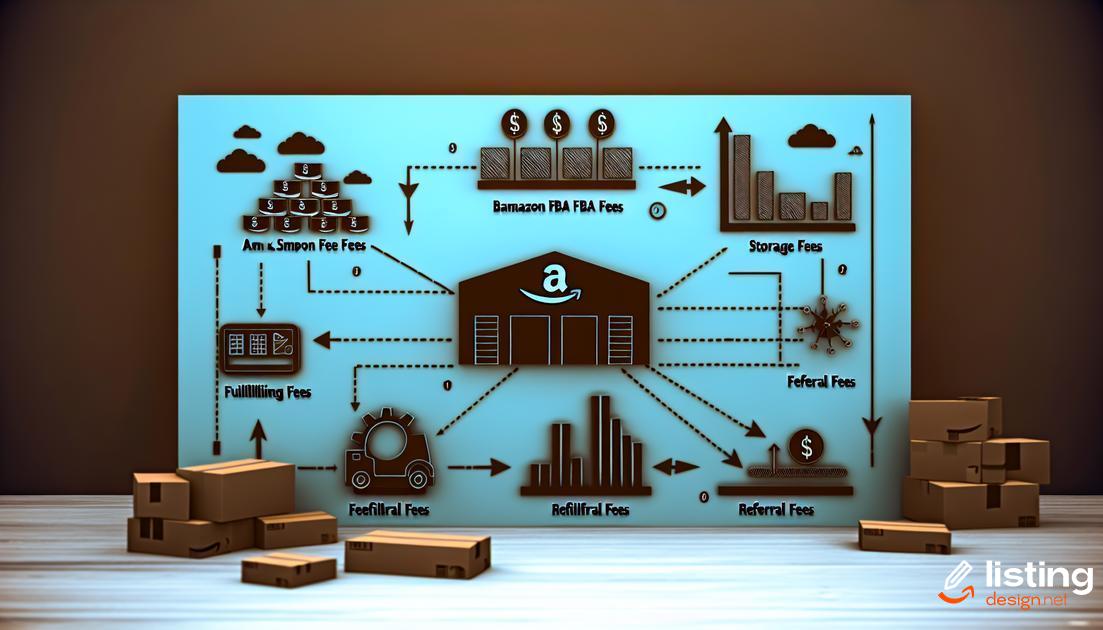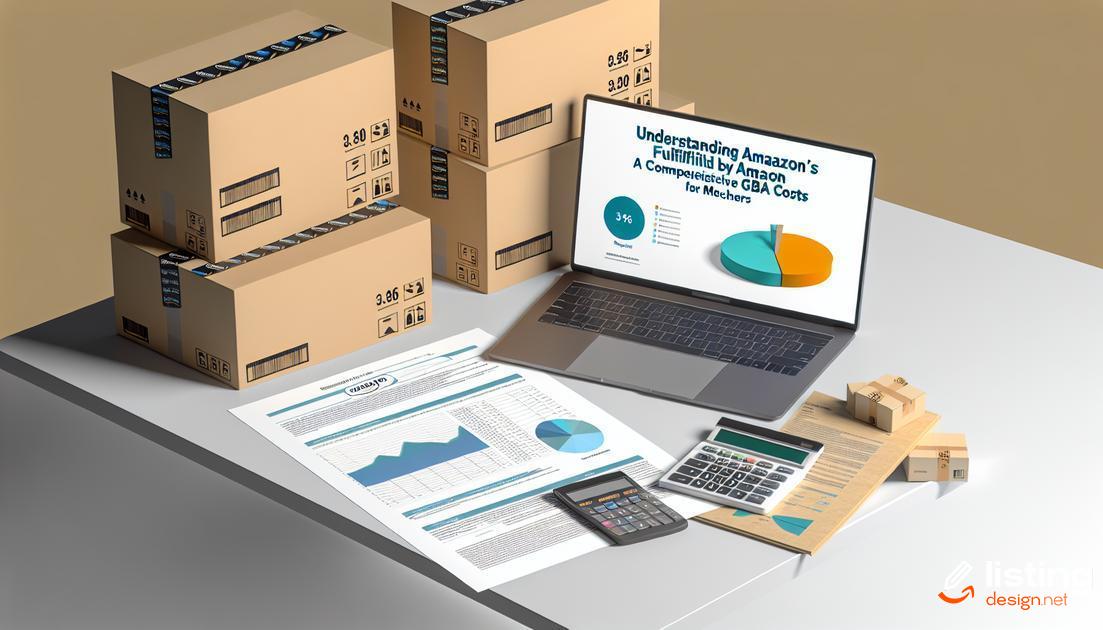Understanding Amazon FBA costs is crucial for optimizing your business expenses and profits. In this guide, we’ll break down each cost component, from shipping and preparation to storage fees, and offer strategies to minimize these expenses. With Amazon FBA, you gain access to an extensive marketplace, but it comes with specific costs you need to manage. Read on to explore the detailed aspects of Amazon FBA costs and make informed decisions to boost your business.
Table of Contents
What is Amazon FBA?
Amazon FBA, or Fulfillment by Amazon, is a service where Amazon handles the storage, packaging, and shipping of products on behalf of sellers. This service simplifies logistics for sellers and allows them to reach a vast customer base.
When you choose Amazon FBA, your products are stored in Amazon’s fulfillment centers. Once a customer places an order, Amazon picks, packs, and ships the product. Additionally, Amazon handles customer service and returns for these orders.
One of the main benefits of FBA is that it allows sellers to leverage Amazon’s robust logistics network. This means faster shipping times and reliable service, which can lead to increased customer satisfaction.
However, it’s essential to understand that using Amazon FBA comes at a cost. Sellers must be aware of various fees associated with the service to manage their budgets effectively. These fees include fulfillment fees, storage fees, and other potential charges as detailed in the other sections of this guide.
By utilizing Amazon FBA, sellers can focus more on growing their business while relying on Amazon to handle complex logistics. Yet, careful consideration of the associated costs is crucial for maintaining profitability.
Breakdown of Amazon FBA Fees

Understanding the various fees associated with Amazon FBA is crucial for any seller looking to maximize their profits. The fees can generally be broken down into several key categories:
Fulfillment Fees
Fulfillment fees are the charges associated with picking, packing, and shipping your products. These fees are typically based on the size and weight of your items. For small and standard-sized products, the cost might be lower, whereas oversized items will incur higher fees. It’s important to keep these in mind when pricing your products.
Inventory Storage Fees
Amazon charges fees for storing your inventory in their fulfillment centers. These charges can vary based on the time of year, with higher fees during peak shopping seasons like the holidays. Ensure you have an effective inventory management strategy to minimize these costs.
Long-term Storage Fees
In addition to the regular storage fees, Amazon imposes long-term storage fees for items stored in their warehouses for over 365 days. These fees can be substantial, so regularly review your inventory to avoid unexpected costs.
Referral Fees
Amazon takes a percentage of each sale, known as the referral fee. This fee varies by category and generally ranges from 8% to 15%. Make sure to account for this percentage when calculating your profit margins.
Variable Closing Fees
For media products such as books, DVDs, and video games, Amazon charges an additional variable closing fee. This fee is fixed per item and should be factored into your overall cost structure.
By understanding these fees, you can better strategize and optimize your selling approach on Amazon FBA.
Shipping and Preparation Costs
Shipping and preparation costs are two crucial components of the overall expenses that sellers using Amazon FBA need to consider. These costs can significantly impact your profitability and should be carefully managed.
When shipping products to Amazon’s fulfillment centers, sellers incur shipping fees based on the weight and dimensions of the packages. Utilizing Amazon’s partnered carriers may offer cost advantages. It’s essential to calculate the per-unit shipping cost to understand its effect on your pricing strategy.
In addition to shipping, preparation costs include tasks such as labeling, packaging, and adding barcodes to your products. Some items might also require additional preparation to meet Amazon’s guidelines, like poly bagging or bubble wrapping.
Amazon provides a range of preparation services for a fee, but many sellers choose to handle these tasks themselves or outsource to third-party prep centers. The trade-off between cost and time should be carefully evaluated.
Understanding and optimizing your shipping and preparation costs can enhance your competitiveness and profitability on Amazon FBA.
Storage Fees and Management

Storage fees in Amazon FBA can significantly impact your profitability. Amazon charges for storing inventory in their fulfillment centers. The fees are calculated based on the volume of space your products occupy and are charged monthly.
There are two types of storage fees: monthly inventory storage fees and long-term storage fees. Monthly storage fees apply to all items stored in Amazon’s warehouses. These fees vary by time of year, with higher rates during peak holiday seasons. For example, storage fees are typically higher from October to December due to increased demand for space.
Long-term storage fees are assessed on items that have been in fulfillment centers for more than 365 days. To avoid these hefty fines, manage your inventory effectively and ensure that products move quickly.
Proper inventory management is crucial. Use tools like Amazon’s Inventory Performance Index (IPI) to monitor your stock levels and identify slow-moving items. Regularly reviewing this data can help you make informed decisions about restocking and removal of excess inventory.
Additionally, Amazon offers a removal service for unsold inventory. By utilizing this service, you can avoid long-term storage fees and optimize your storage costs. Understanding these elements can lead to better financial outcomes and sustainable business growth.
Hidden Costs in Amazon FBA
When selling on Amazon using the FBA (Fulfilled by Amazon) program, there are several hidden costs that can catch sellers off guard. Besides the obvious fees like shipping and storage, there are less apparent costs that can affect your profitability.
Labeling and Bagging Fees
Many products require specific packaging, labeling, or bagging before they can be shipped to an Amazon warehouse. If your items are not prepared according to Amazon’s guidelines, you might have to pay additional fees for these services.
Long-Term Storage Fees
While monthly storage fees can be calculated in advance, inventory that sits in Amazon’s warehouse for more than a year incurs long-term storage fees, which are significantly higher. This can particularly affect slow-moving or seasonal items.
Removal and Disposal Fees
If you need to remove inventory from Amazon’s warehouse due to overstock, seasonal changes, or other reasons, Amazon charges a fee per item to either return or dispose of the inventory. These costs can add up quickly when dealing with large quantities.
Returns Processing Fees
Amazon FBA handles customer returns, but they charge a fee for processing these returns. This includes inspecting, repackaging, and possibly disposing of the returned goods if they cannot be resold.
Inventory Placement Service Fees
To simplify logistics, sellers can use Amazon’s Inventory Placement Service, which allows sending all inventory to a single fulfillment center. However, this convenience comes at a cost, as Amazon redistributes the inventory to different centers at a predefined fee.
Understanding these hidden costs is crucial for effectively managing your margins and ensuring your Amazon FBA business remains profitable. Always factor these potential fees into your cost calculations.
Strategies to Minimize FBA Costs

Exploring ways to minimize Fulfillment by Amazon (FBA) costs can make a significant impact on your profit margins. One effective strategy is to optimize your inventory management. Keeping track of your stock levels and opting for regular inventory audits can help avoid unnecessary storage fees and long-term storage charges.
Another cost-saving measure is to use Amazon’s Inventory Performance Index (IPI) to your advantage. By maintaining a high IPI score, you can ensure you’re not penalized with additional fees and can utilize special perks and benefits.
Consider reviewing and negotiating shipping rates with carriers. Sometimes, partnering with third-party logistics providers can offer competitive rates that are better than Amazon’s fulfillment fees.
Packaging efficiency is another crucial area. Streamline your packaging process to minimize weight and dimensions, helping to lower both storage and shipment costs.
Take advantage of Amazon’s FBA Small and Light program for items that meet the weight and size criteria, as it offers reduced fulfillment costs, increasing your overall profitability.
Ultimately, an in-depth analysis of your sales data can reveal trends and insights, enabling you to make data-driven decisions to enhance cost-efficiency. Regularly monitoring and adjusting your pricing strategies in alignment with Amazon’s guidelines can also help to maintain a competitive edge.
Comparing Amazon FBA with Alternatives
When it comes to choosing a fulfillment service, Amazon FBA is often a popular choice for many sellers. However, there are numerous alternatives that offer different benefits and costs. It is essential to evaluate these options thoroughly.
Third-Party Logistics (3PL)
Third-party logistics providers offer comprehensive solutions that can include warehousing, packing, and shipping. They can provide more flexible pricing models compared to Amazon FBA.
Pros:
- Often cheaper storage fees.
- Customizable services.
- Potentially quicker handling times.
Cons:
- Less consistent service quality.
- Complicated integrations.
Self-Fulfillment
Some sellers opt to handle storage, packing, and shipping themselves. While this can often reduce costs, it requires significant time and effort.
Pros:
- Complete control over operations.
- Reduced costs on storage and handling fees.
Cons:
- Time-consuming.
- Requires space and resources.
Other Marketplaces
Several online marketplaces like eBay and Etsy offer their own fulfillment services, which may come at a lower cost compared to Amazon FBA.
Pros:
- Lower fees.
- Potentially lower competition.
Cons:
- Less visibility compared to Amazon.
- Fewer integrated services.
Final Thoughts on Amazon FBA Costs

Understanding the various costs associated with Amazon FBA is crucial for sellers aiming to manage their expenses effectively. These costs can impact your overall profitability, and it’s important to be aware of them.
Basic FBA Fees: These include fulfillment fees and storage costs. Fulfillment fees are charged per unit and depend on the product’s size and weight. Monthly storage fees are based on the volume of your inventory and can increase during peak seasons.
Shipping and Preparation Costs: Before your products reach Amazon’s warehouses, you’ll incur shipping costs to send them there. Additionally, there are preparation fees for tasks like labeling and packaging.
Long-term Storage Fees: If your products remain in Amazon’s warehouses for more than 365 days, long-term storage fees will apply. These can significantly add to your costs, so managing inventory levels is essential.
Hidden Costs: There are other fees that sellers often overlook. These include removal order fees, returns processing fees, and unplanned service fees for non-compliant shipments.
Utilizing strategies to manage and reduce these costs can help improve your margins. It’s also beneficial to keep an eye on Amazon FBA alternatives and consider hybrid fulfillment solutions where applicable.


